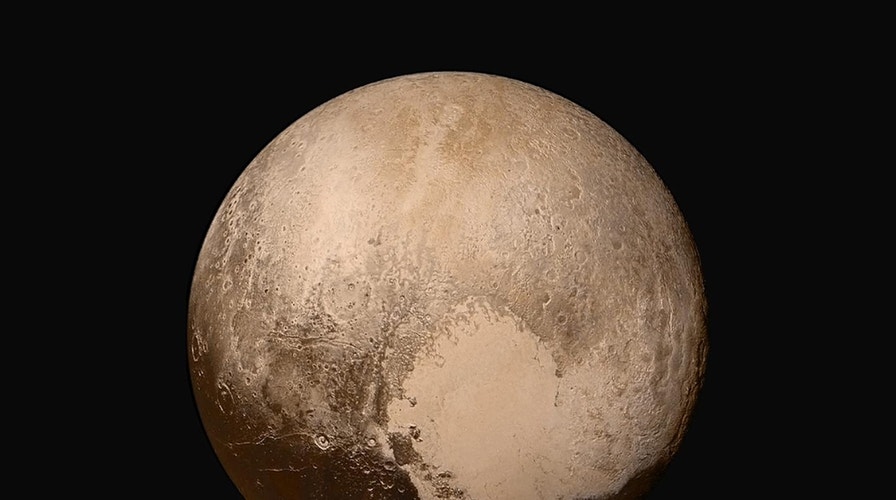Fox News Flash top headlines for Feb. 10
Fox News Flash top headlines are here. Check out what's clicking on Foxnews.com.
There is a debate in the scientific community over whether Pluto should be a planet again. But a new study affirms that the dwarf planet's "beating heart" is impacting its atmospheric circulation patterns.
The research notes that the heart-shaped structure, known as Tombaugh Regio, is in charge of the wind patterns on the dwarf planet. Much of it comes from the left part of the structure (known as Sputnik Planitia), which causes nitrogen winds to blow. Nitrogen is the majority of Pluto's atmosphere, combined with carbon monoxide and methane. During the day, the nitrogen ice warms and turns into vapor, but by night, it condenses and reforms as ice.
“This highlights the fact that Pluto’s atmosphere and winds – even if the density of the atmosphere is very low – can impact the surface,” said the study's lead author, Tanguy Bertrand, in a statement. The winds also carry heat, particles of haze and grains of ice, the study added.

Four images from NASA’s New Horizons’ Long Range Reconnaissance Imager (LORRI) were combined with color data from the Ralph instrument to create this global view of Pluto. Credit: NASA/Johns Hopkins University Applied Physics Laboratory/Southwest Research Institute.
LIFE ON PLUTO? OCEAN, LONG THOUGHT TO BE FROZEN COULD BE HIDDEN, STUDY CLAIMS
Bertrand and the other researchers looked at the data from NASA's New Horizons spacecraft, which discovered the feature in July 2015, to come up with the determination.
Pluto has an eastward spin on its axis, but the westward direction of the wind blowing likely suggests that the dwarf planet has a more interesting and diverse terrain than previously thought.
“Before New Horizons, everyone thought Pluto was going to be a netball – completely flat, almost no diversity,” Bertrand added. “But it’s completely different. It has a lot of different landscapes and we are trying to understand what’s going on there.”
Understanding the atmospheric conditions on Sputnik Planitia's western edge could be as important as understanding the Earth's oceans, Bertrand continued.
PLUTO SHOULD BE A PLANET AGAIN, RESEARCHERS ARGUE
“Sputnik Planitia may be as important for Pluto’s climate as the ocean is for Earth’s climate,” Bertrand continued. “If you remove Sputnik Planitia – if you remove the heart of Pluto – you won’t have the same circulation.”
The study has been published in the Journal of Geophysical Research: Planets.
Pluto, which has a multilayered atmosphere, moons and other features commonly associated with planets, is influenced by Neptune's gravity, which caused it to lose its status as a planet in 2006.
However, several in the scientific community, including NASA Administrator Jim Bridenstine, have argued that it should be a planet and not a dwarf planet.





















